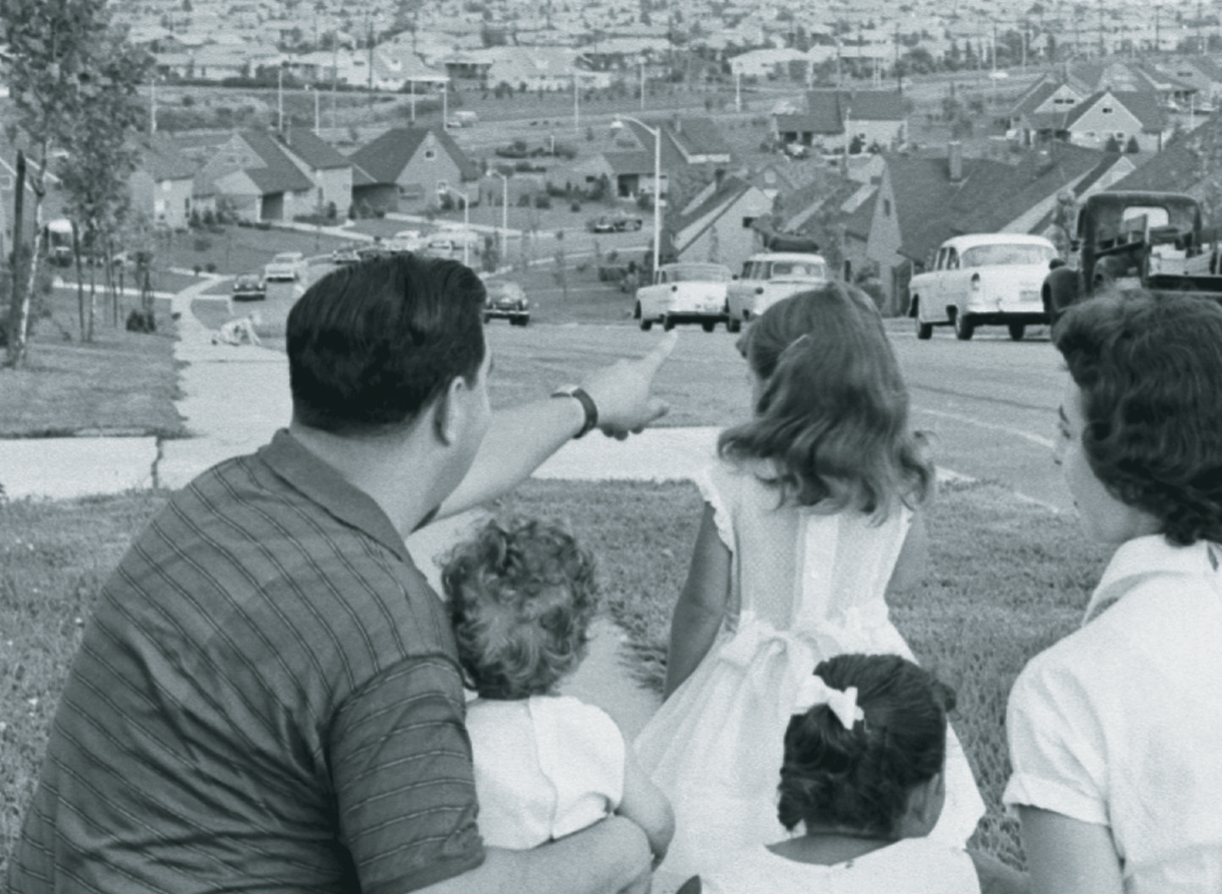Burgeoning Suburbs and Declining Cities.
Printed Page 749 Chapter Chronology
Burgeoning Suburbs and Declining Cities. Although suburbs had existed since the nineteenth century, nothing symbolized the affluent society more than their tremendous expansion in the 1950s. Eleven million new homes went up in the suburbs, and by 1960 one in four Americans lived there. As Nixon boasted to Khrushchev during the kitchen debate, the suburban homes were accessible to families with modest incomes. In 1949, families could purchase mass-produced houses in the new 17,000-home development called Levittown on Long Island, New York, for just under $8,000 each ($75,000 in 2012 dollars). Developments similar to Levittown, as well as more luxurious ones, quickly went up throughout the country. The government subsidized home ownership by guaranteeing low-interest mortgages and by making interest on mortgages tax deductible. Government-funded interstate highways running through urban areas also encouraged suburban development.

The growing suburbs helped polarize society, especially along racial lines. Each Levittown homeowner signed a contract pledging not to rent or sell to a non-Caucasian. The Supreme Court declared such covenants unenforceable in 1948, but suburban America remained dramatically segregated. Although some African Americans joined the suburban migration, most moved to cities in search of economic opportunity, doubling their numbers in most cities during the 1950s. These migrants, however, came to cities that were already in decline, losing not only population but also commerce and industry to the suburbs or to southern and western states.